Japanese Garden Training Program 2025
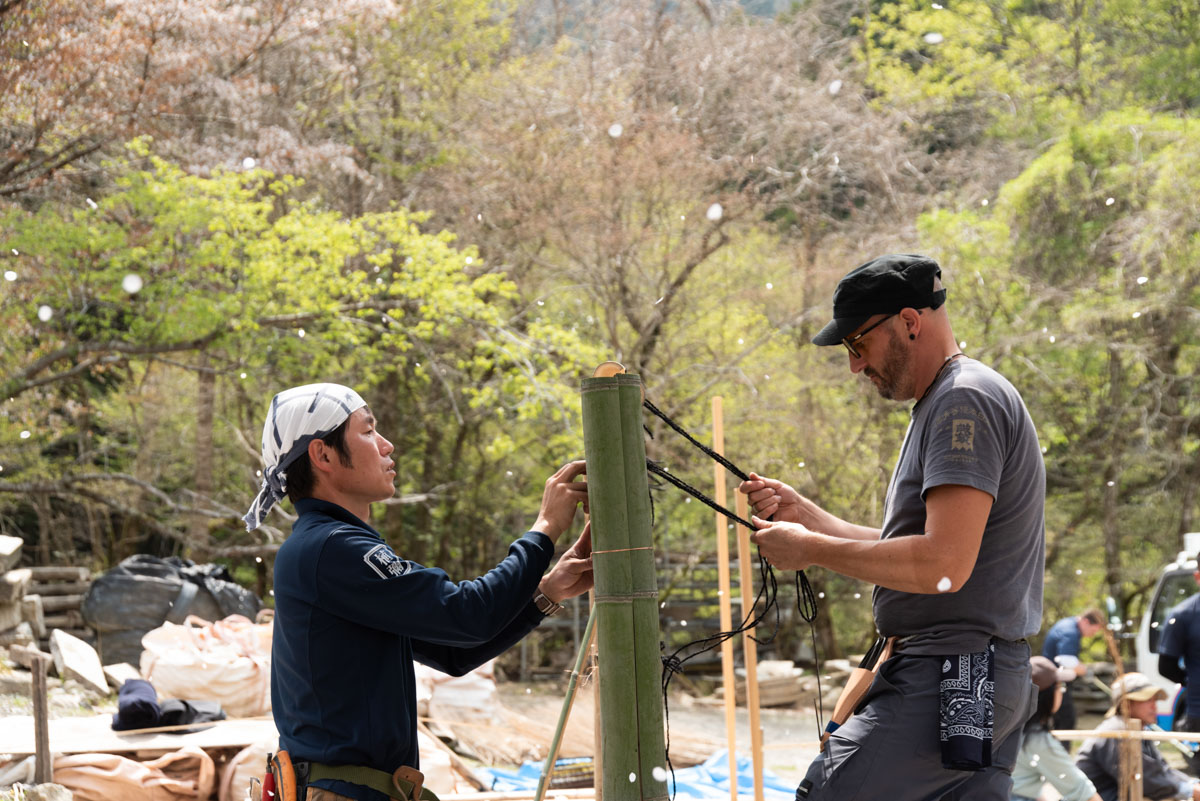
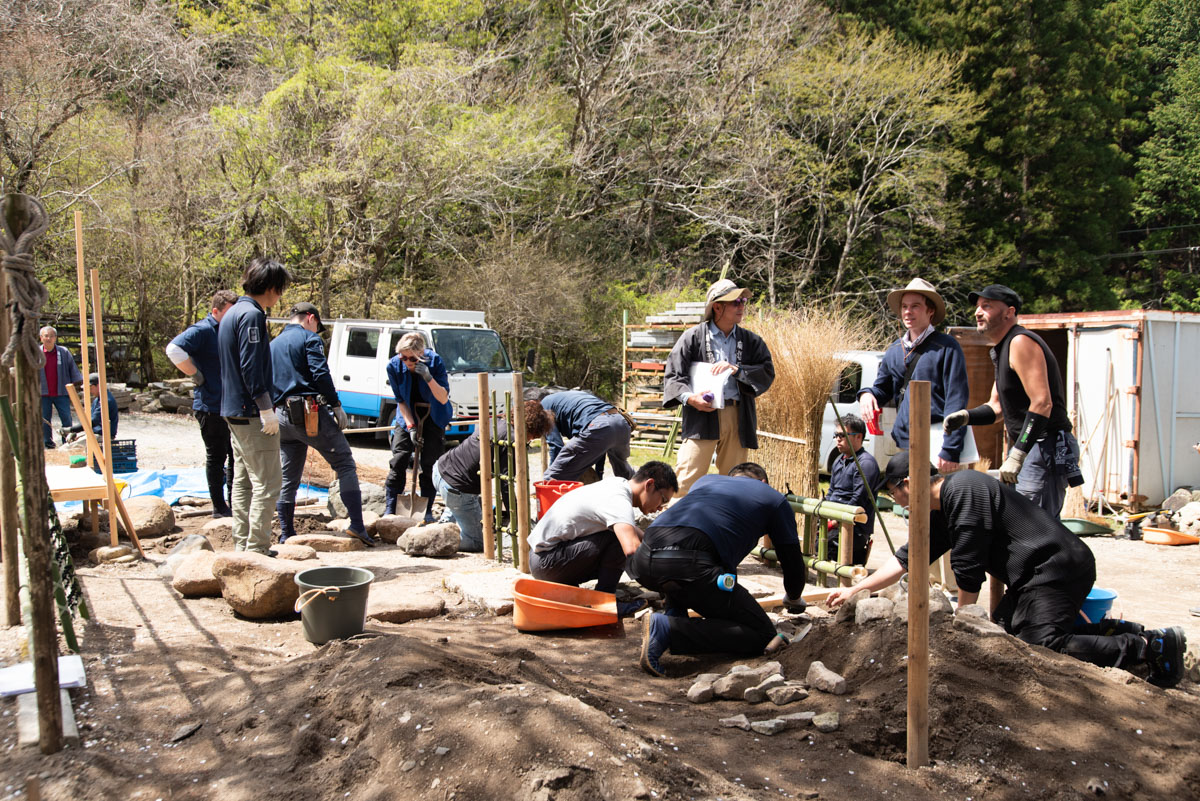
- Theme:
- The Expression of Garden Space in Kyoto: The Stagecraft of the Bamboo Fence
- Period:
- April 14-18, 2025
- Instructors:
- Tomoki Kato, Sueo Kato, Miki Takashi (president of Miki Chikuzai), Tomohiko Muto, Shigeyoshi Takemura
About our program
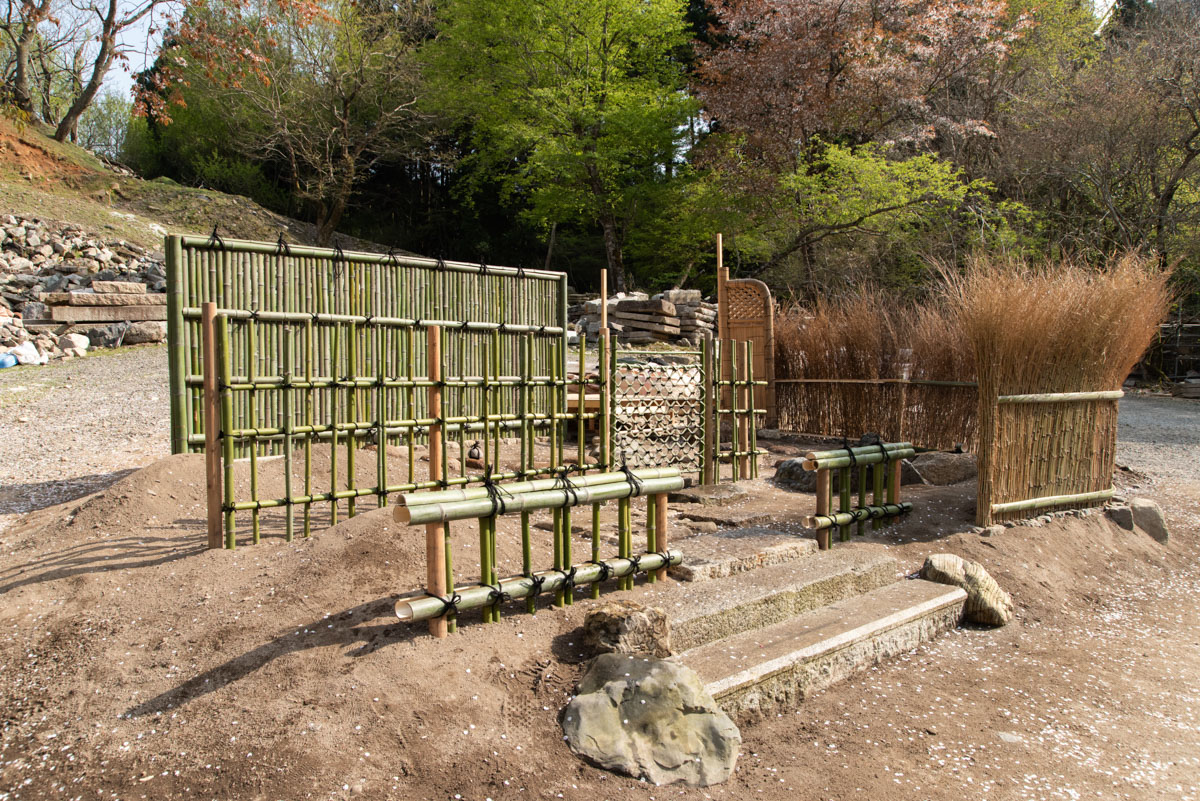
Ueyakato Landscape has always involved itself in efforts to communicate the value and skills of nurturing Japanese gardens to more people from diverse backgrounds. These communication efforts offer our gardeners a new challenge by allowing them to put the skills they have acquired into words.
Building on our first Japanese Garden Training Program for non-Japanese speakers held in 2024, we focused on bamboo fences as a technique of creating Japanese garden space with your own hands for our 2025 program.
More beautiful, more natural, more pleasant.
Different people have different aims. In each case, however, they need skills to reach their goals. This also applies to the skills of garden management and creation.
But to learn these skills, first we need to understand why we need them. What kind of “good work” does having these skills allow us to achieve?
Fortunately, Kyoto is blessed with many famous gardens that make excellent use of the local landscape. That’s why we created a program that included not only hands-on training, but also opportunities to see some of Kyoto’s most celebrated gardens.
Program Schedule
Day 1 Lecture by Ueyakato Landscape’s company president, welcome lunch, garden excursions
Day 2 Lecture about bamboo materials, examples of how bamboo fences are used in real settings
Day 3 Examples of how bamboo fences are used in real settings, garden management training
Day 4 Garden creation
Day 5 Garden creation, celebratory dinner
Day 1
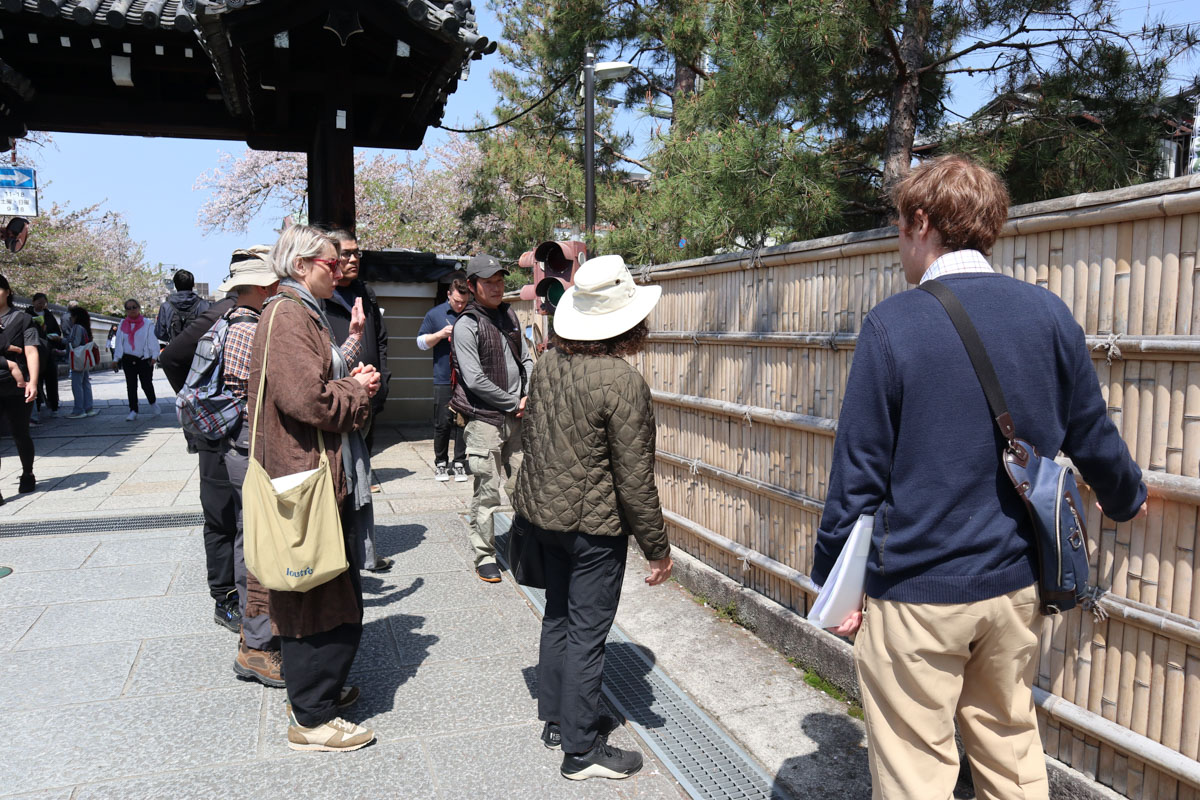
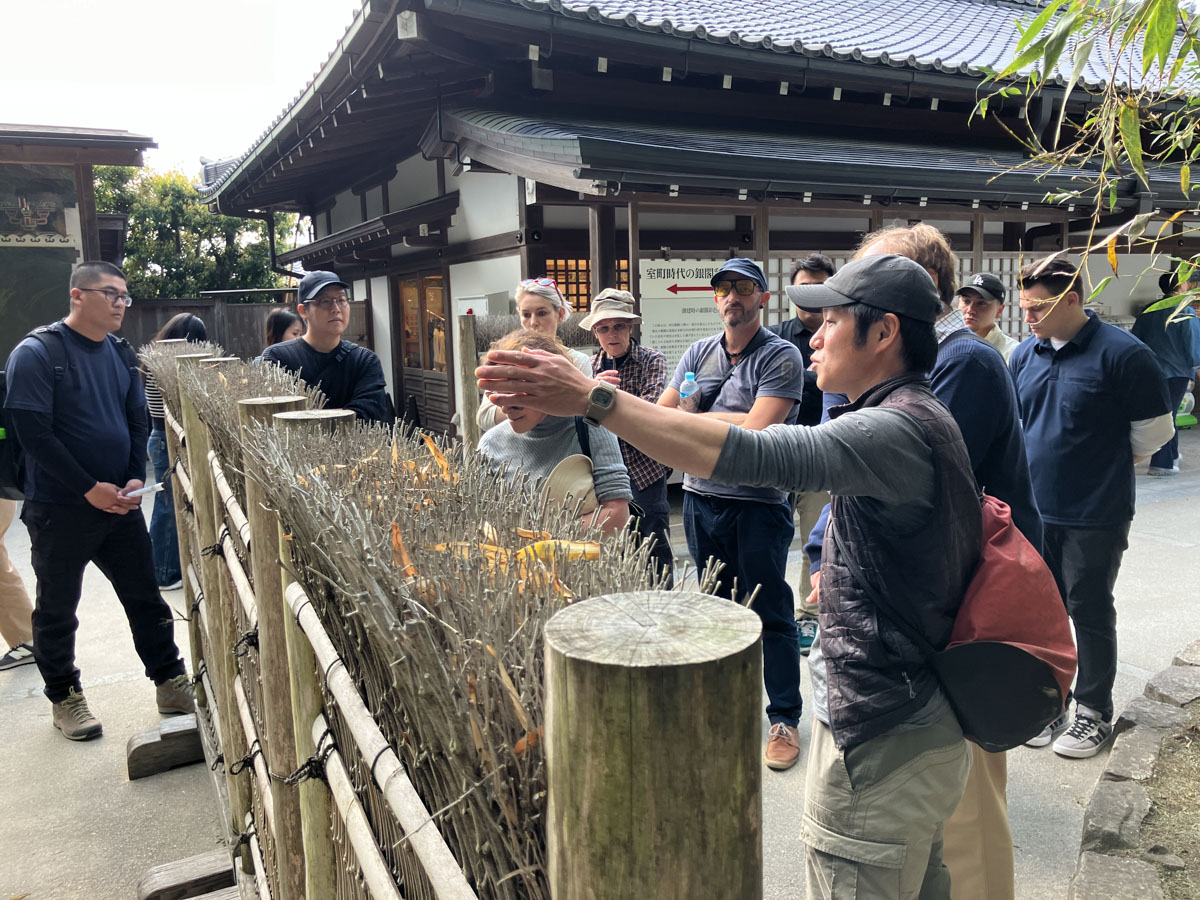
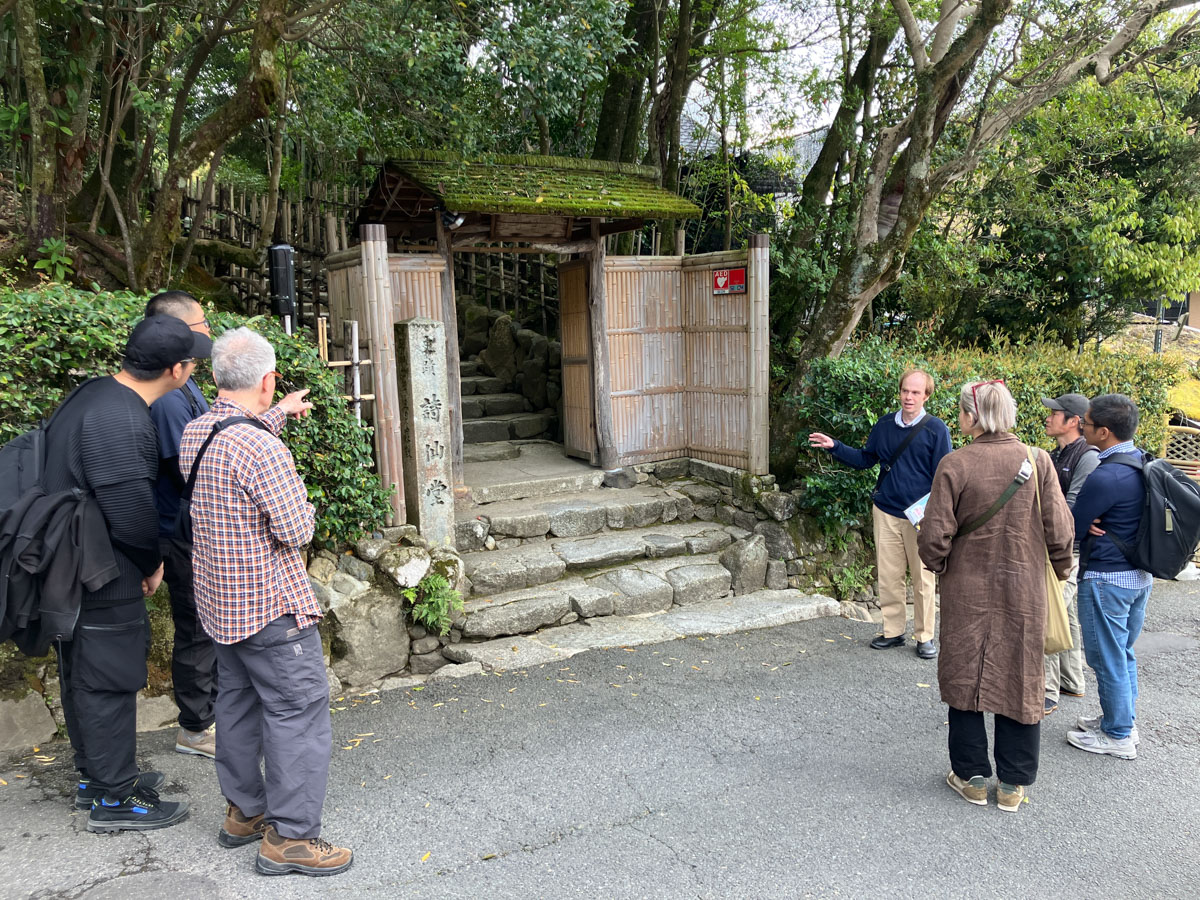
In each historical period, Japanese gardens have reflected the lifestyles of the time and changed alongside them. On the morning of our program’s first day, we held an introductory lecture to set the pace and tone for the next five days of learning. After a welcome lunch held at our company, we spent the afternoon visiting the Japanese gardens of Buddhist temples in Kyoto that are famous for their original bamboo fence styles: Kennin-ji, Ginkaku-ji, and Shisen-do.
Day 2
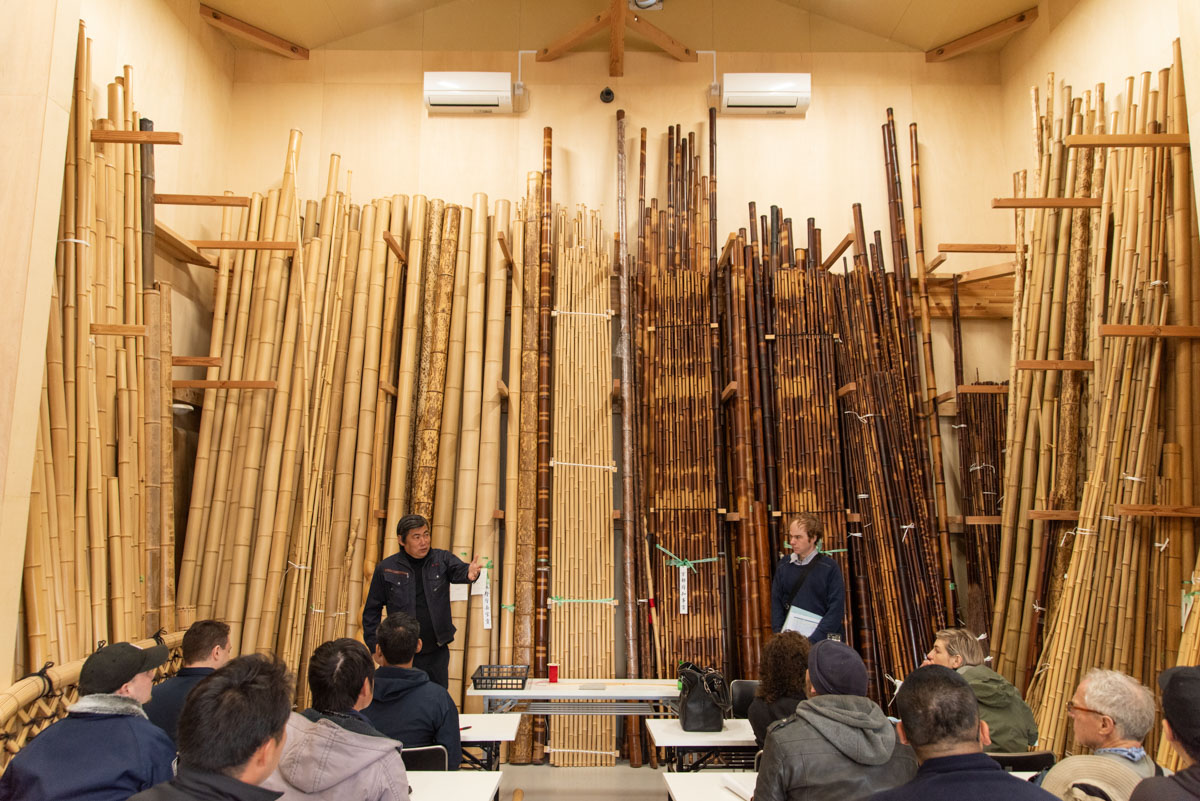
On Day 2, we enjoyed a lecture at Miki Chikuzai, one of Kyoto’s leading bamboo material dealers and a demonstration of how living bamboo is cut down and prepared as a material. The day concluded with a visit to Chishaku-in Temple to observe the different ways of using bamboo fences there.
Day 3
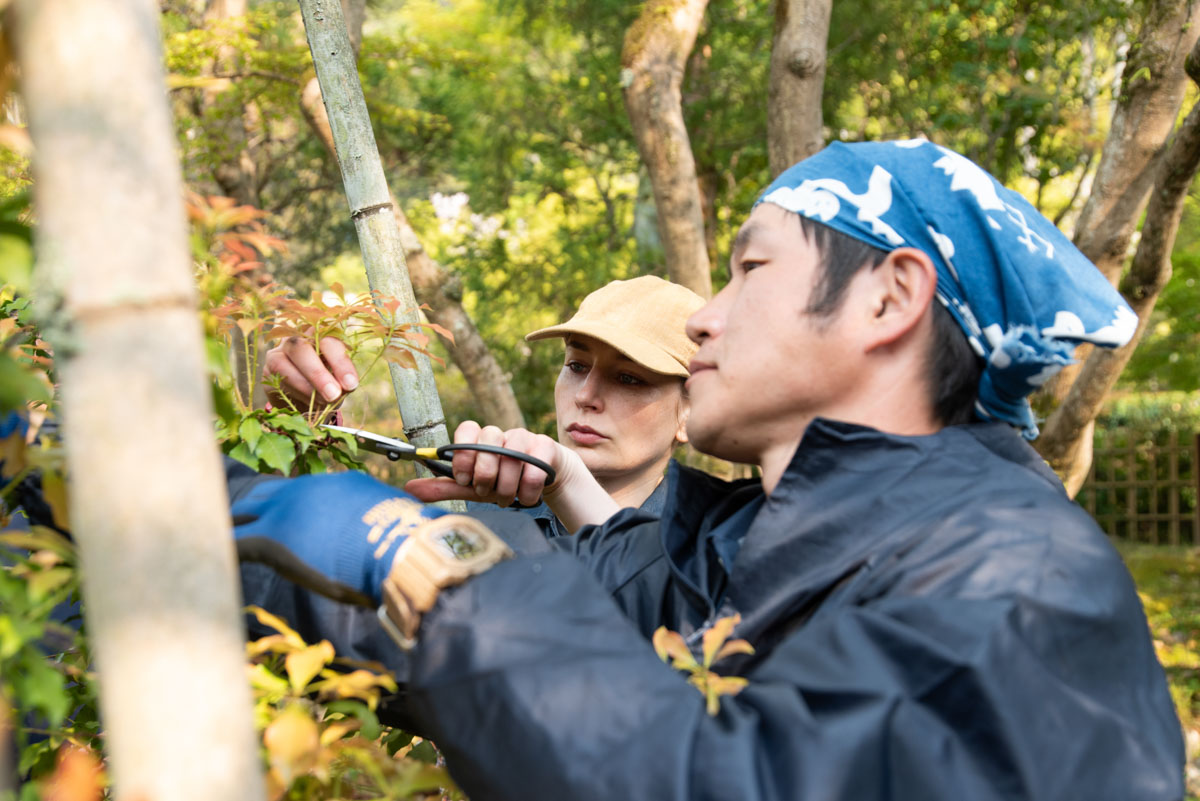
After seeing how bamboo fences are used in the cluster of private garden villas in Kyoto’s Nanzen-ji Temple neighborhood, we spent the afternoon at Dainei-ken, one of the gardens under Ueyakato Landscape’s management, and had participants care for the scenery there.
Days 4 and 5
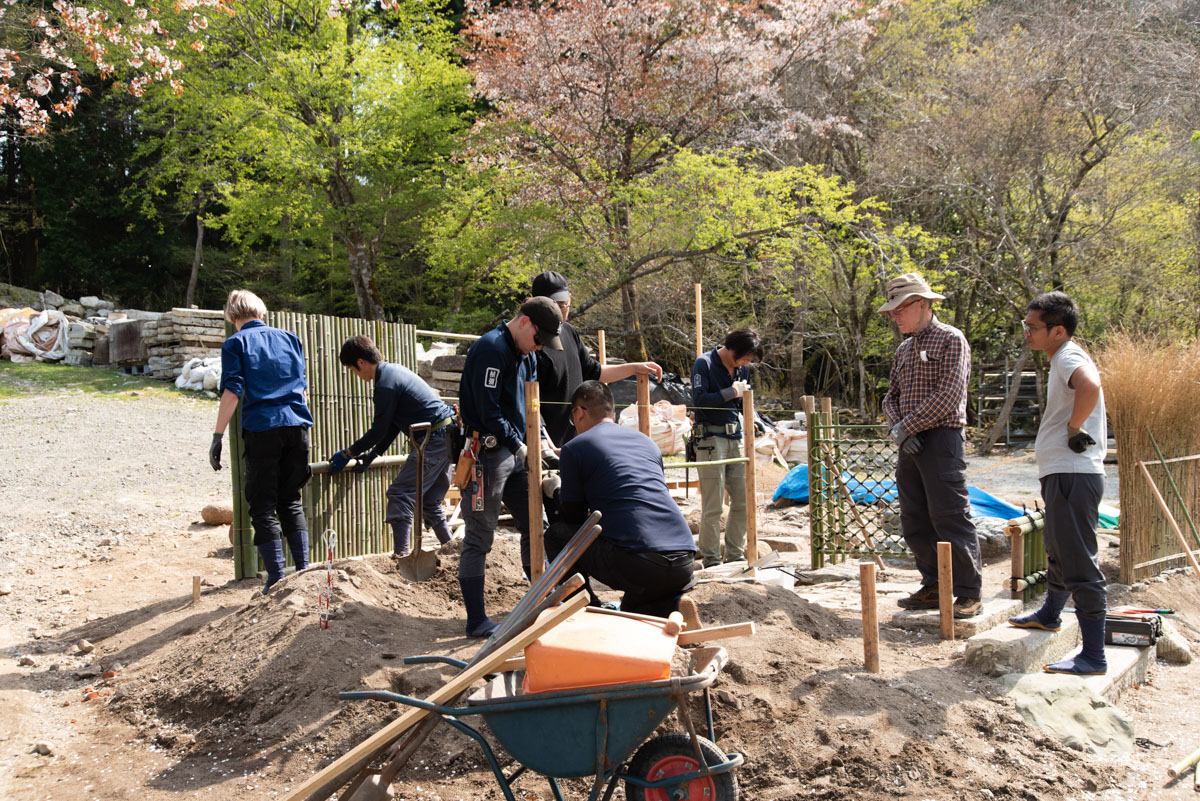

Based on what we learned during the first three days of the course, we spent Days 4 and 5 creating garden scenery. To help participants learn the technique of bamboo fence creation more effectively, the instructors prepared part of the garden’s fences and path in advance. In a short period of time, participants experienced creating four styles of bamboo fence: Kennin-ji Temple, Yotsume-gaki, Kinkaku-ji Temple Fence, and a Bamboo Branch Fence (takeho-gaki). Because we had taught participants in advance the rope knot necessary for bamboo fence building, known as the otoko-musubi (or male knot), they were easily able to apply the fruits of their efforts to the garden creation exercise.
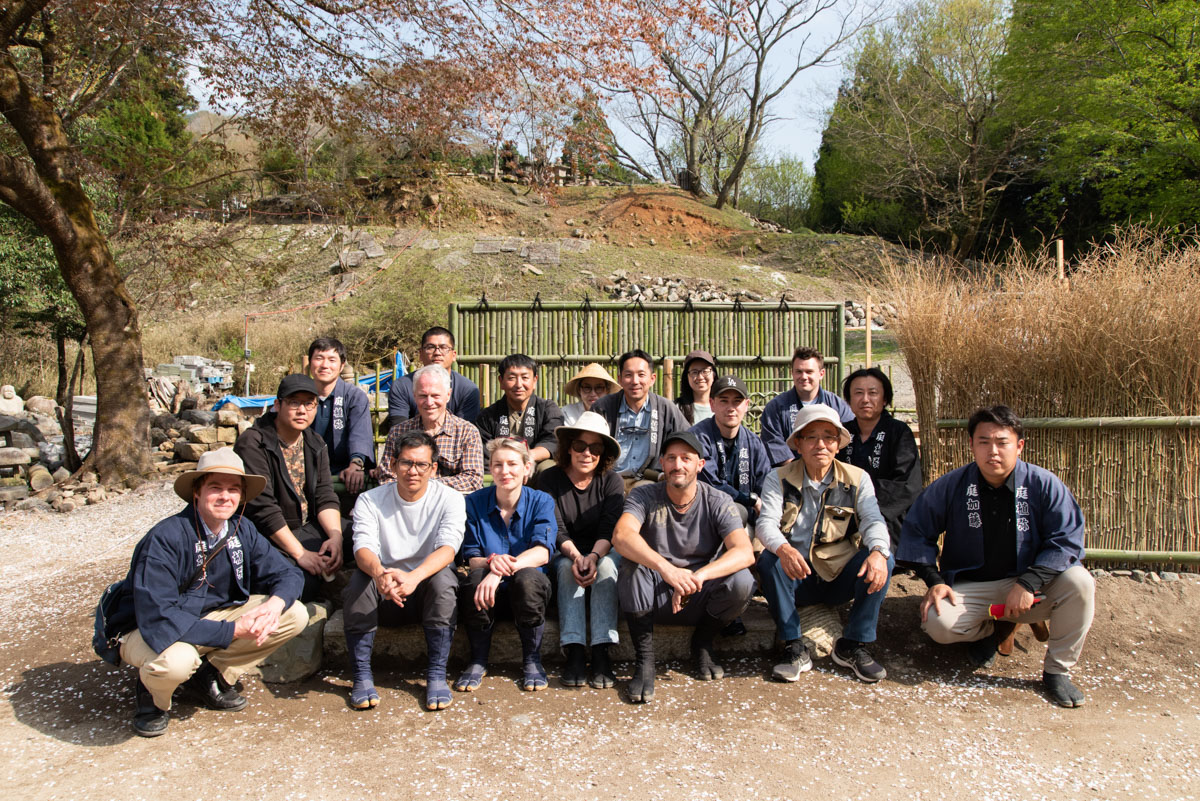
Looking Back and Looking Forward
Based on our experiences from last year, in this year’s program, we were able to show participants examples of excellent gardening in Kyoto and give them plenty of real training in the garden. In 2026, we will conduct this program again, and change its content to facilitate even more efficient learning.
